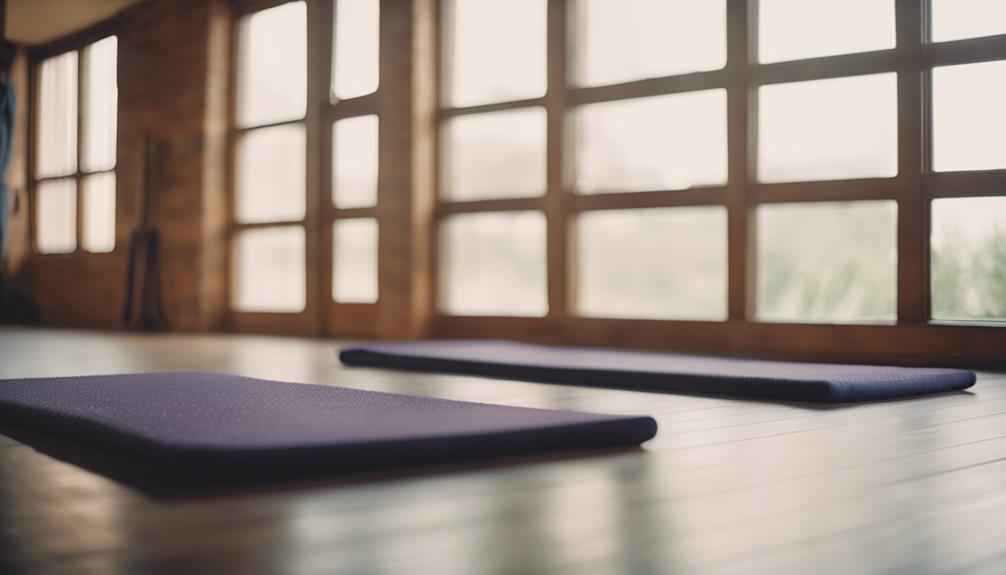Yoga Props

Yoga props are essential tools that can significantly enhance your practice, whether you are a beginner or an experienced yogi. In this guide, we will delve into the various types of yoga props available, their benefits, and how to effectively incorporate them into your routine. By understanding the importance of yoga props, you can deepen your practice and make it more accessible and enjoyable.
Understanding Yoga Props: What Are They?
Yoga props are supportive tools that aid practitioners in achieving better alignment, improving stability, and enhancing comfort during yoga poses. Common yoga props include blocks, straps, bolsters, blankets, and wheels. Each prop serves a distinct purpose, making them invaluable for practitioners of all levels. By utilizing these tools, yogis can modify poses to suit their individual needs, ensuring a more effective and safe practice. In essence, yoga props bridge the gap between the body’s current capabilities and the ideal postures, fostering a more inclusive environment.
The Benefits of Using Yoga Props
Incorporating yoga props into your practice offers numerous benefits. They provide support and stability, making challenging poses more accessible. For instance, using blocks can bring the ground closer to you, making it easier to maintain balance in poses like Triangle or Half Moon. Additionally, props can help alleviate strain on the body, reducing the risk of injury. They also encourage deeper stretches and prolonged holds, allowing for greater flexibility and muscle engagement. Overall, yoga props empower practitioners to explore their limits safely, making yoga more enjoyable and fulfilling.
Types of Yoga Props: A Comprehensive Overview
There are various types of yoga props designed to enhance your practice. Here are some of the most common:
Related Posts:
1. Blocks: Usually made from foam, cork, or wood, blocks provide support in standing poses and help with alignment.
2. Straps: These are perfect for reaching difficult areas, such as the feet or hands, and can assist in deepening stretches.
3. Bolsters: Bolsters offer support and comfort, particularly in restorative practices and seated poses.
4. Blankets: They provide cushioning and warmth, making them ideal for seated poses and relaxation.
5. Wheels: A newer addition to the yoga prop family, wheels help improve flexibility and balance, especially in backbends.
By familiarizing yourself with these props, you can select the ones that best suit your practice and personal needs.
How to Choose the Right Yoga Props for Your Practice
Selecting the right yoga props depends on your individual needs and the style of yoga you practice. If you’re a beginner, starting with a set of blocks and a strap can be incredibly beneficial. These props will help you build a solid foundation and safely explore different poses. For restorative yoga practitioners, bolsters and blankets are essential for comfort and support. Additionally, consider the material and size of the props. For example, if you travel frequently, lightweight and portable options are ideal. Always choose props that resonate with your body and enhance your experience.
Incorporating Yoga Props into Your Routine
Integrating yoga props into your practice can be seamless and intuitive. Start by using props in familiar poses; for example, place blocks under your hands in a Forward Fold or use a strap to assist in a seated forward bend. As you become more comfortable, experiment with different props in various poses to discover new levels of support and stability. Remember, there are no strict rules in yoga—adapt the use of props according to your body’s needs and sensations. This flexibility allows you to cultivate a more personalized and rewarding practice.
Common Misconceptions About Yoga Props
Despite their advantages, some practitioners harbor misconceptions about yoga props. One common myth is that using props indicates weakness or lack of ability. In reality, props are tools for enhancing your practice, not crutches. They allow you to explore poses more deeply and safely, regardless of your experience level. Another misconception is that props are only for beginners. In truth, experienced yogis also use props to refine their practice and reach new heights. Embracing the use of yoga props can lead to a more fulfilling and versatile practice.
Yoga Props and Injury Prevention: A Vital Connection
Injury prevention is a critical aspect of any yoga practice, and yoga props play a significant role in ensuring safety. By providing support and stability, props can help practitioners maintain proper alignment and avoid strain. For example, using blocks can prevent overextending in poses, while straps can assist in safely achieving deeper stretches without forcing the body. Additionally, props allow for modifications that cater to individual limitations, making yoga accessible for everyone. Practicing with props fosters greater body awareness, ultimately leading to a more injury-free experience.
Conclusion: Elevate Your Yoga Practice with Props
In conclusion, yoga props are invaluable tools that can elevate your practice to new levels. By understanding their benefits, types, and effective usage, you can create a more enriching and enjoyable yoga experience. Whether you are a beginner or an advanced practitioner, incorporating yoga props into your routine will enhance your flexibility, strength, and overall well-being. So, embrace the power of yoga props and unlock the full potential of your practice today!
By adopting this holistic approach to your yoga journey, you’ll not only improve your physical practice but also cultivate a deeper connection with your body and mind. Happy practicing!How To Induce Labor With A Yoga BallWhat Is The Definition Of Yoga